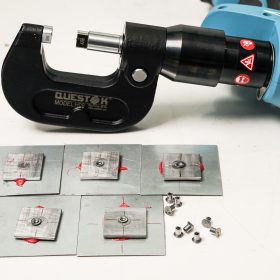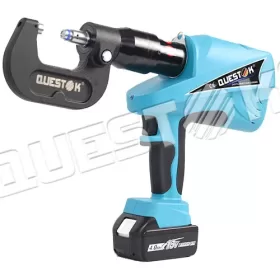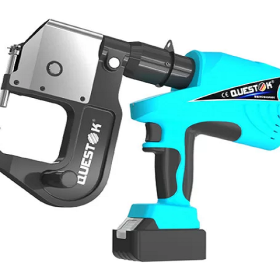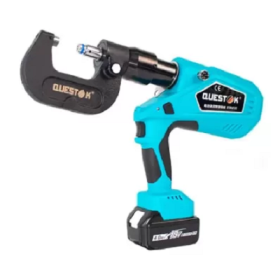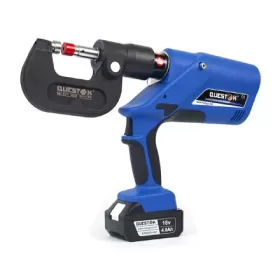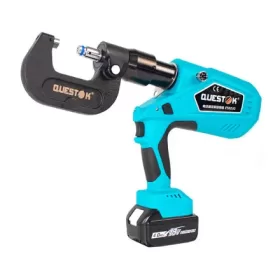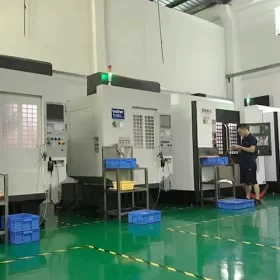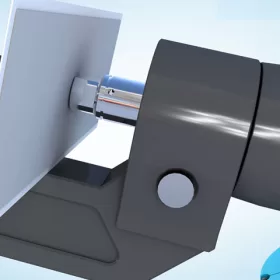Cold Riveting vs. Traditional Methods- Understanding the Differences
In the riveting world, the conventional hammer-and-anvil approach is gradually giving way to the sleek and efficient technique of cold riveting. While both methods share the common goal of fastening two or more pieces of material together, their contrasting techniques and implications set them apart.
Cold Riveting: A Controlled and Precise Approach
Cold riveting, as its name suggests, is a process that does not involve heat. Instead, it utilizes a specialized tool to apply high force that plastically deforms the material, forming a mechanically interlocked joint. This controlled technique offers several advantages:
Strength and Durability: The cold deformation process creates a strong and durable bond due to localized work-hardening.
No Heat Damage: Eliminating heat eliminates the risk of material degradation, preserving the integrity of the components.
Precise Control: The controlled force allows for precise joint formation, reducing the likelihood of defects and ensuring consistent quality.
Traditional Riveting: The Original Method
Traditional riveting involves the use of a riveting hammer and a nail-like rivet. The rivet is inserted through holes in the material and then hammered to expand its head, creating a permanent joint. While this method has served industries for centuries, it presents some drawbacks:
Heat Exposure: The hammering process generates heat, which can weaken the material and introduce stress concentrations.
Hammer Variability: The hand-operated nature of traditional riveting can lead to inconsistent joint quality due to variations in hammering force.
Noise and Vibration: The loud hammering often associated with traditional riveting can create noise and vibration disturbances.
Choosing the Right Method
The choice between cold riveting and traditional methods depends on the specific application and priorities. For high-strength, corrosion-resistant, and aesthetically pleasing joints, cold riveting is often the preferred option. Conversely, traditional riveting may suffice for less demanding applications where cost and ease of implementation are primary considerations.
Conclusion
Cold riveting and traditional riveting represent two distinct approaches to the art of fastening. While traditional methods have a long history, cold riveting’s advantages in strength, precision, and efficiency make it an increasingly popular choice in modern engineering applications. By understanding the differences between these techniques, engineers and technicians can make informed decisions to achieve optimal results for their specific projects.
- Company News
- Industry News
- Tag
- Tags
-
The Advantages of Questok Rivet Guns: Precision, Efficiency, and Durability
In industrial fastening applications, the choice of tools directly impacts productivity, safety, and long-term cost-effectiveness. Questok rivet guns have emerged as a standout solution for professionals across aerospace, automotive, and construction sectors. Combining advanced engineering with user-centric design, these tools deliver unmatched performance. Below are the key advantages that make Questok rivet guns a preferred choice:
-
Rivet Gun FAQ
Rivet Gun FAQ-SPR
-
Fast Assembly and Repair With Cordless Solid Rivet Gun
Questok cordless solid rivet gun stands out as a pivotal innovation, merging portability with power to facilitate efficient and effective fastening in a myriad of applications.
-
Redifine The Role of Self-piercing Riveting Gun Machine
Self-piercing riveting adopts high-speed mechanical fastening skill that joins thin sheet materials, typically steel and aluminum alloys.
-
The Latest Innovations in Clinching Tool Design
Explore the latest innovations in clinching tool design, redefining precision, efficiency, and versatility in material joining.
-
The Application and Maintenance of Self-Piercing Rivet Guns
Delve into the applications of self-piercing rivet guns in the automotive and aerospace industries and reveal the essential maintenance practices that ensure their accuracy and efficiency.
-
Rivetless Riveting Gun for Ventilation Duct Projects
The ventilation duct rivetless gun is a tool for riveting ventilation ducts without rivets.
-
Guide to Using Self-Piercing SPR Riveting Gun
In the automotive industry, self-piercing SPR (Self-Piercing Rivet) riveting guns are commonly used for joining metal components in vehicle bodies, including BMW vehicles.
-
Rivet Gun FAQ
Rivet Gun FAQ-SPR
-
Versatile Fastening- Applications of the Handheld Rivet Gun Across Industries
In the realm of fastening, the handheld rivet gun stands as a testament to ingenuity and versatility. Its ability to effortlessly join materials with sheer strength and permanence has revolutionized manufacturing and construction processes, leaving an enduring mark on diverse industries. Aerospace: Where precision and reliability are paramount, the rivet gun shines. In aircraft assembly, […]
-
Time-Saving Tools- Speeding Up Projects with Electric Blind Rivet Guns
In the whirlwind of project deadlines, every minute counts. But what if there was a tool that could dramatically reduce assembly time, giving you an edge in the race against the clock? Enter the electric blind rivet gun: your secret weapon for lightning-fast and effortless riveting. Electric blind rivet guns are the ultimate time-savers for […]
-
Streamlining Fastening- How an Electric Blind Rivet Gun Enhances Efficiency
Introduction In the realm of manufacturing and assembly, fastening plays a crucial role in securing components and ensuring structural integrity. Traditional manual rivet guns, while reliable, are often time-consuming and labor-intensive. The advent of electric blind rivet guns has revolutionized the fastening process, significantly enhancing efficiency and productivity. This article delves into the benefits of […]
-
The Role of Automation in Electric Rivetless Clinching
Electric rivetless clinching (ERC) is a lightweight joining process that eliminates the need for rivets or other fasteners. This can lead to significant cost savings and increased production efficiency. Automation plays a critical role in ERC, enabling high-speed and high-volume production. Automated Feed Systems Automated feed systems are used to accurately position the two workpieces […]
-
Why Choose a Universal Self-Piercing Riveting Gun for Your Projects?
In the realm of construction and fabrication, riveting guns stand as indispensable tools for creating secure and robust connections. Among the various types available, universal self-piercing riveting (SPR) guns have emerged as a game-changer due to their versatility and efficiency. This article will delve into the compelling reasons why choosing a universal self-piercing riveting gun […]
-
Why Choose Stainless Steel Hollow Rivets for Your Projects?
In the world of industrial manufacturing, choosing the right fasteners for your projects is crucial for ensuring longevity and reliability. Among the many options available, stainless steel hollow rivets stand out as a superior choice for a wide range of applications. This article delves into the compelling reasons why stainless steel hollow rivets are the […]
-
Top Trends in Electric Rivetless Clinching Guns
In the realm of fastening technology, electric rivetless clinching guns have emerged as a revolutionary solution for a wide range of industrial applications. These advanced tools offer several преимущества and capabilities, revolutionizing the way businesses approach their fastening needs. Adoption of Brushless Motors Brushless motors have gained significant traction in electric rivetless clinching guns due […]
